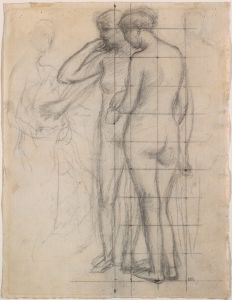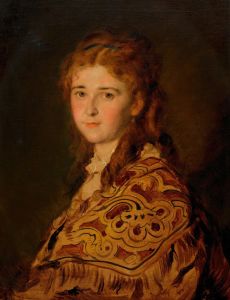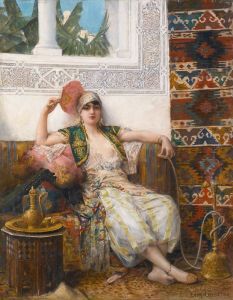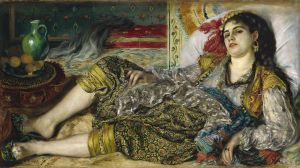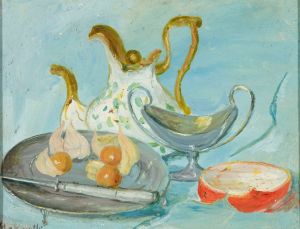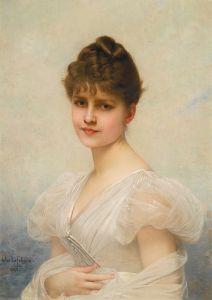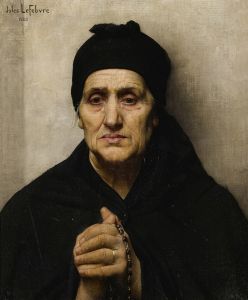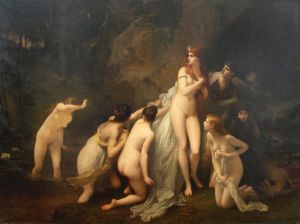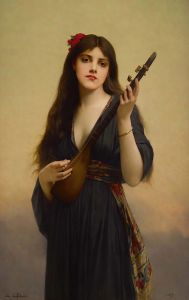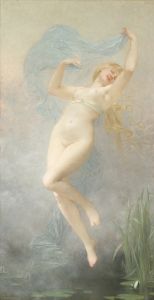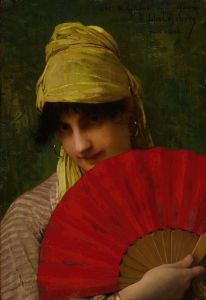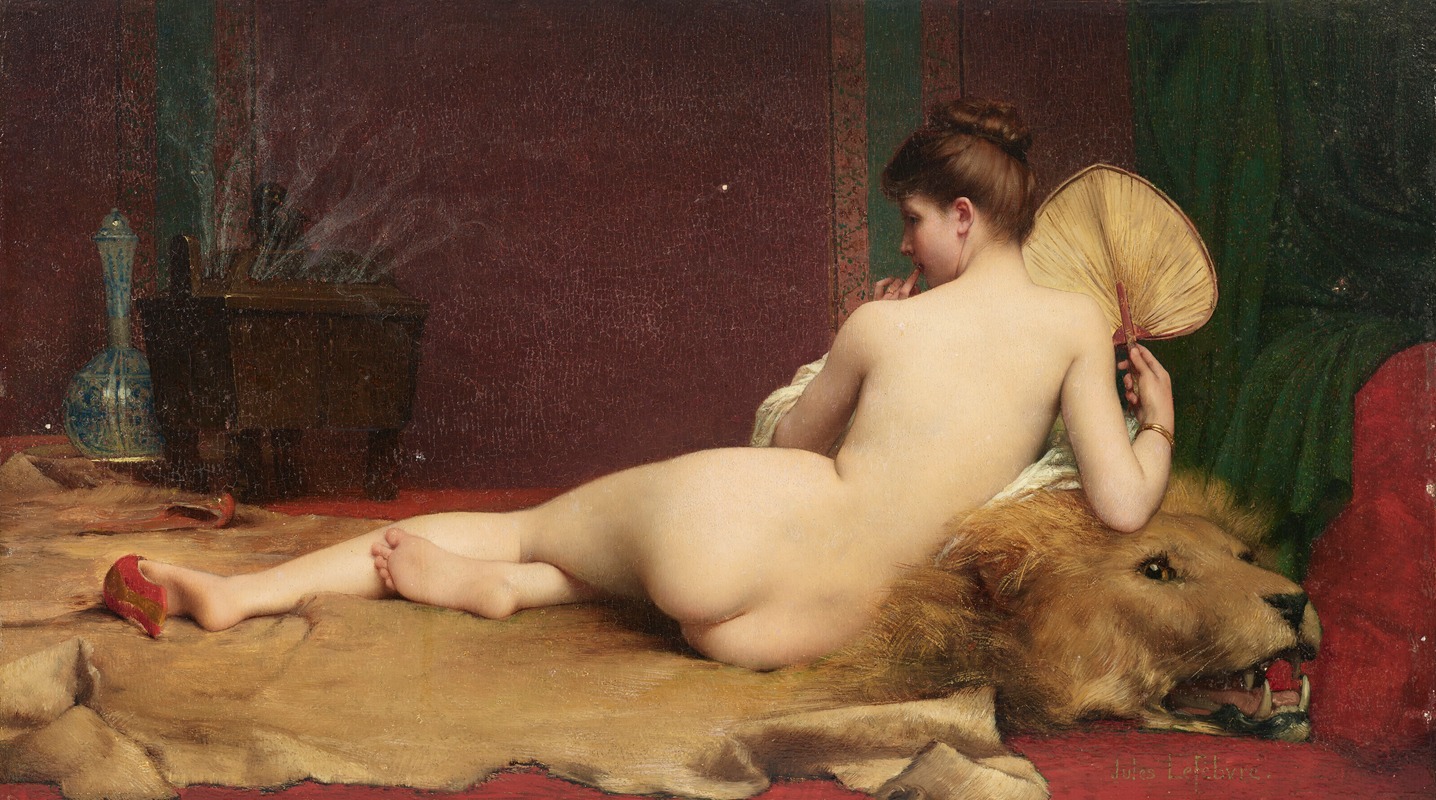
Odalisque
A hand-painted replica of Jules Joseph Lefebvre’s masterpiece Odalisque, meticulously crafted by professional artists to capture the true essence of the original. Each piece is created with museum-quality canvas and rare mineral pigments, carefully painted by experienced artists with delicate brushstrokes and rich, layered colors to perfectly recreate the texture of the original artwork. Unlike machine-printed reproductions, this hand-painted version brings the painting to life, infused with the artist’s emotions and skill in every stroke. Whether for personal collection or home decoration, it instantly elevates the artistic atmosphere of any space.
Jules Joseph Lefebvre's "Odalisque" is a notable example of 19th-century French academic painting, reflecting the period's fascination with Orientalism and the idealized female form. Lefebvre, born in 1836, was a prominent figure in the academic art scene, known for his meticulous technique and his role as a teacher at the Académie Julian in Paris. His works often depicted mythological, historical, and allegorical subjects, with a particular emphasis on the human figure.
"Odalisque," painted in 1874, is one of Lefebvre's most celebrated works and exemplifies his skill in rendering the human form with precision and grace. The term "odalisque" refers to a female slave or concubine in a harem, a subject that became popular among Western artists during the 19th century as part of the Orientalist movement. This movement was characterized by a fascination with the exotic and the depiction of Eastern cultures through a Western lens, often romanticizing and idealizing the subjects.
In "Odalisque," Lefebvre presents a reclining female figure, capturing the viewer's attention with her serene expression and the luxurious setting that surrounds her. The painting is noted for its attention to detail, particularly in the rendering of textures such as the softness of the skin, the sheen of the fabrics, and the intricate patterns of the textiles. Lefebvre's use of light and shadow enhances the three-dimensionality of the figure, creating a sense of depth and realism.
The composition of "Odalisque" is carefully balanced, with the figure positioned diagonally across the canvas, drawing the viewer's eye along the length of her body. The background is richly decorated, yet it does not detract from the central figure, instead complementing her presence and adding to the overall opulence of the scene. This attention to composition and detail is characteristic of Lefebvre's work and reflects the academic training that emphasized technical skill and adherence to classical ideals.
Lefebvre's "Odalisque" is also significant for its contribution to the broader discourse on Orientalism in art. While the painting is a product of its time, reflecting the Western fascination with the "exotic" East, it also raises questions about representation and the portrayal of women in art. The depiction of the odalisque as an object of beauty and desire is a theme that has been critiqued for its objectification and the perpetuation of stereotypes.
Despite these critiques, "Odalisque" remains an important work within Lefebvre's oeuvre and the broader context of 19th-century art. It exemplifies the technical prowess and aesthetic ideals of the academic tradition, while also serving as a historical document that reflects the cultural attitudes and artistic trends of its time. Today, the painting is appreciated both for its artistic merit and as a point of discussion in the ongoing examination of Orientalism and its impact on art and culture.
Jules Joseph Lefebvre's "Odalisque" continues to be studied and admired for its beauty and craftsmanship, as well as its place within the complex narrative of art history. The painting is housed in various collections, where it remains accessible to the public and scholars interested in exploring the rich tapestry of 19th-century academic art.






